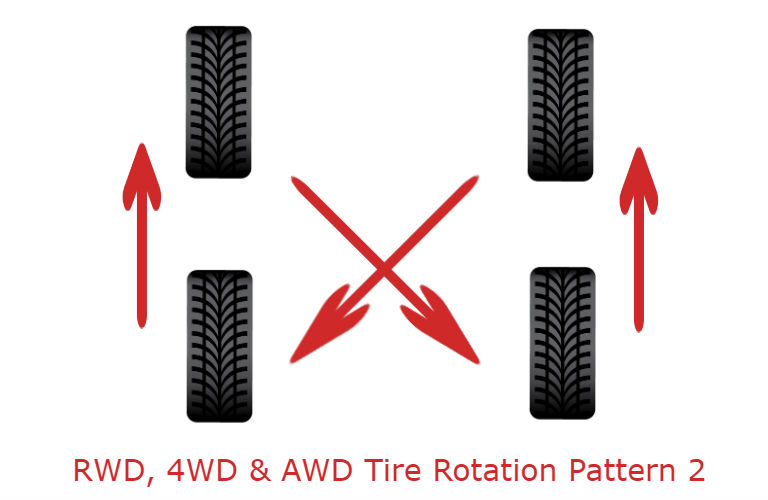Home > Company > Tire Safety > Maintaining Tires > Tire Rotation
Even if your car is properly aligned, tires still need to be rotated for optimal wear performance and maintenance. Rotation counteracts the uneven wear characteristics of each wheel position on the vehicle. How often should you do it? To maximize tire tread life, follow the recommended rotation schedule in your vehicle owners manual. If there is not a recommendation from the vehicle manufacturer, then rotate your tires every 5,000 to 7,000 miles by taking your car to a trusted tire dealer or automotive service center.
If your car's wheels are out of alignment, your tires will wear unevenly, which can lead to early tire replacement. Also, a car out of alignment could signal other mechanical problems that may affect tire performance. For the best results, choose a shop that uses accurate computer-assisted machines, and ask for a printout of the adjustment angles to keep with your service records.
Tires and wheels that are out of balance don't just cause annoying vibration. Uneven tread wear may also result, further reducing your ride comfort and leading to earlier tire replacement. A shop with an electronic spin balancer can help smooth things out.
Front-wheel drive vehicles place braking, steering and driving forces on the front axle tires. Rear axle tires receive primarily braking forces, resulting in a much faster wear rate for the front axle tires.
The "Modified Cross Pattern" can be performed on any front- or rear-wheel drive vehicle equipped with four non-directional tires (directional tires must be rotated front to rear only).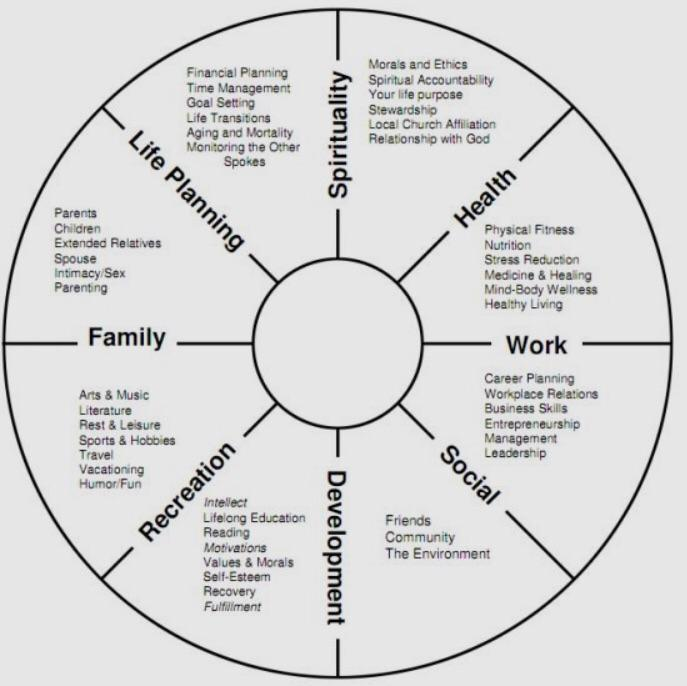 Free rolling axle tires are crossed and installed to the drive axle, while the drive axle tires are brought straight to the free rolling axle (without crossing). Just remember, “cross to drive”.
Free rolling axle tires are crossed and installed to the drive axle, while the drive axle tires are brought straight to the free rolling axle (without crossing). Just remember, “cross to drive”.
Directional treads are designed to perform in the direction denoted on the tire sidewall only. They must always be rotated front to rear — no matter the vehicle they are installed on — so the direction of the rotation does not change.
Watch our Tread Life video to see more rotation patterns.
Notes:
Following rotation, adjust all tires to the vehicle manufacturer’s recommended inflation pressures. Always torque lug nuts or lug bolts to manufacturer’s recommended specification.
Vehicles equipped with permanent four-wheel drive and those with "on command" four-wheel drive and driven mainly in four-wheel drive mode are best suited to a four-tire cross rotation. With this pattern, tires from both axles are crossed and installed on the opposing axle.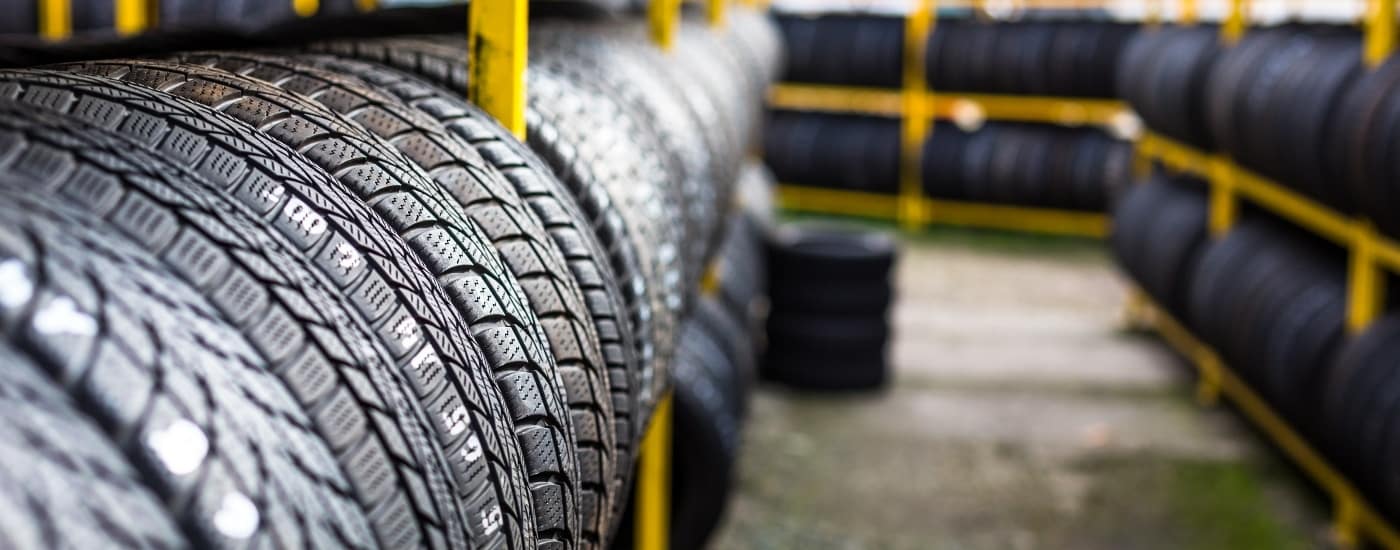
Straight rotation was developed in the early years of radial tires. This rotation method switches the tires front-to-rear but does not cross side to side. This rotation method is used for directional tread patterns.
If your spare tire is a matching full size tire (as opposed to a temporary spare) and you want to keep it in rotation, move the spare to the right rear position. Then place the tire that would have gone to the right rear in the spare position.
If your vehicle has dual rear wheels the rotation pattern looks like two triangles, one on the driver’s side and one on the passenger’s side. For each side, move the outer dual tire to the inner position, the inner dual tire to the steer position and the steer tire to the outer dual position.
Never include a temporary spare tire in the rotation.
Directional tread patterns must be rotated front-to-rear only so the direction of the rotation does not change.
Learn about our mission, our achievements, and our ongoing commitments
Read Our Origin Story
Tire rotation and tire balancing are important to ensure a vibration-free ride and even tread wear. Keeping your tires in balance and rotating them regularly is important to get the most out of them.
Let’s dive into the details of what tire rotation and balancing are all about and how they affect your tires.
Do Tires Need To Be Balanced When Rotated?
No, it’s not necessary to balance your tires when you have them rotated. It is a good idea however to have them balanced every other tire rotation service however, although this isn’t required.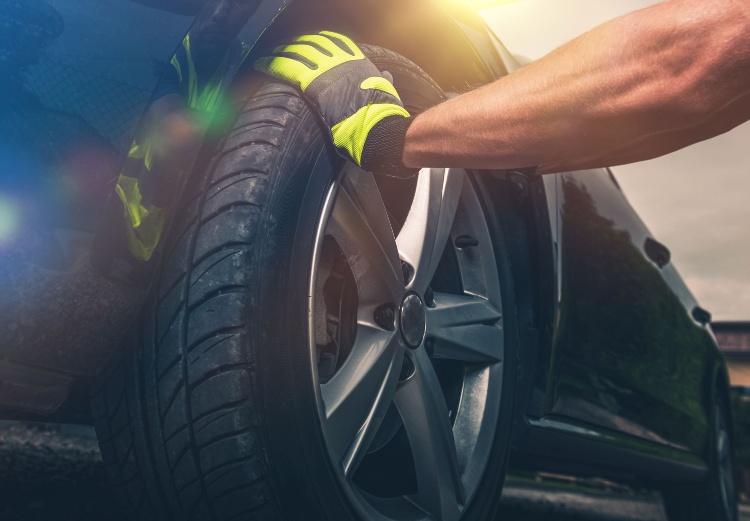
Tire balancing and tire rotation are unrelated and independent of each other but are often suggested to be performed at the same time.
Tire rotation is the process of moving a wheel and tire assembly from one corner of your vehicle to another on a regular basis to ensure even tread wear.
Tire balancing is the process of adding wheel weights at certain locations around the circumference of your wheel assembly to ensure the wheel and tire spin vibration free.
Tire rotation does not include balancing usually unless explicitly stated. Tire rotation and balancing are sometimes performed at the same time, but rotation is usually performed more often than balancing. In fact, tires often never get rebalanced once they’ve been installed.
We do recommend that you rebalance your tires every 10,000 miles, however. This is to ensure they wear as evenly as possible and account for slight wheel damage from potholes and curb strikes as well as slight balance issues that occur as your tires wear down over time.
We recommend rotating your tires every 5,000 miles and balancing them every 10,000 miles.
Rotating your tires every 5,000 miles will usually meet or exceed the tire manufacturer’s warranty requirement and will do an excellent job of ensuring they wear as evenly as possible.
Balancing your tires every 10,000 miles will also help ensure even tire wear and prevent cupping issues. As your tires wear down over time they can become slightly unbalanced. Also, wheel damage from potholes and curb strikes can cause balance problems that may not be obvious but can affect wear over time.
If you do not regularly rotate and balance tires you can experience several potential problems.
Out-of-balance tires are a common source of tire noise. When tires are unbalanced, the faster you drive the more they will vibrate and bounce up and down. This will cause the tires to wear more quickly on the tread and less so on the opposite side of the tire.
If you do not rotate your tires regularly you will cause your tires to wear out more quickly and tread wear that has slowly become uneven as the tread wears down will begin making noise as well as shortening tire life.
Keeping tires rotated and balanced will ensure that noise from tires is as low as possible.
Tire vibration happens when tires are out of balance or there is uneven tread wear across the tread of the tire. When you balance and rotate your tires you help ensure that these vibrations aren’t felt through the chassis of your car or truck and have a more comfortable ride.
When you rotate your tires, you will help the tire tread to even back out and increase tread life in addition to giving you a smoother ride.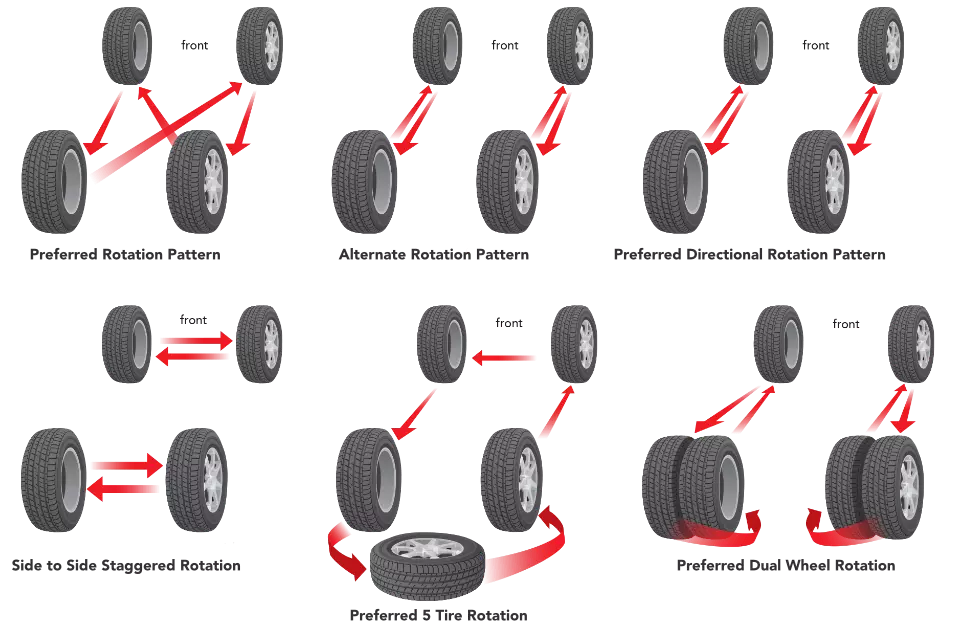
When you balance tires, the wheel assemblies will not begin to vibrate more as you are driving faster. When wheels and tires spin, small imbalances become more exaggerated as you drive faster and they spin faster.
Unbalanced tires will cause uneven wear and cause the tires to make noise and wear out more quickly.
Poor tire balance can cause significant steering wheel vibration. When wheel assemblies are not properly balanced, they can bounce slightly as they spin faster and faster.
This bouncing can cause the steering wheel to vibrate as the vibrations cause the suspension and steering mechanisms to move rapidly. This vibration is typically minor and slightly annoying. But in some cases, it can be more violent and damaging to your vehicle.
Even tread wear is important to ensure maximum traction and your safety. The less tread you have left on your tires the less safe they become.
If one edge of your tire has plenty of tread and the other edge has none, the tire will be extremely dangerous to drive on even though a portion still has some good tread left.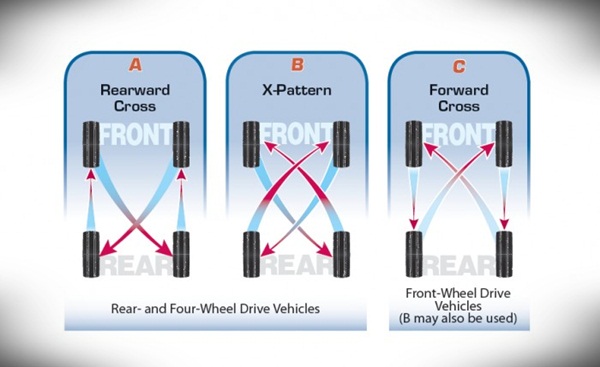
Keeping your tires rotated regularly and making sure the tire and wheel assembly is properly balanced will ensure that the tread wear is as evenly distributed across the tread pattern as possible.
Tires that are not properly maintained by regularly rotating and balancing will not last as long as they are capable of lasting.
It’s possible to cut the usable tread life in half if you don’t rotate your tires as suggested by the tire manufacturer.
For instance, if you don’t rotate your tires and they are wearing significantly on the inside shoulder of the tread, the inside shoulder tread will become bald and become extremely dangerous to drive on even though there is still nearly new tread on the outside shoulder of the tire tread.
The warranty the tire manufacturer provides that guarantees your tires will last a certain amount of time requires that you rotate tires on a certain schedule. You must have proof that you had your tires rotated according to this schedule to claim the warranty if your tires don’t last as long as the manufacturers’ warranty guarantees.
Tire Warranty
You must have proof your tires have been rotated according to the tire warranty requirements to make a mileage warranty claim.
Tire rotation is the process of moving a wheel and tire assembly from one corner of your vehicle to another on a regular rotation to ensure the tread of the tires wears evenly.
There are different tire rotation patterns that should be followed depending on several variables. For instance, front-wheel drive vehicles should use the forward cross or x-pattern tire rotation patterns for best results. Rear-wheel drive vehicles should use the rearward cross or x-pattern tire rotation patterns to ensure more even tread wear.
Tire rotation helps to shift the portion of the tread the car or truck puts the most weight on to a lesser used portion of the tire tread.
It’s not usually possible to ensure that the tread is always used to its fullest potential, but tire rotation is the most practical method of changing the point of the contact patch on the tire tread.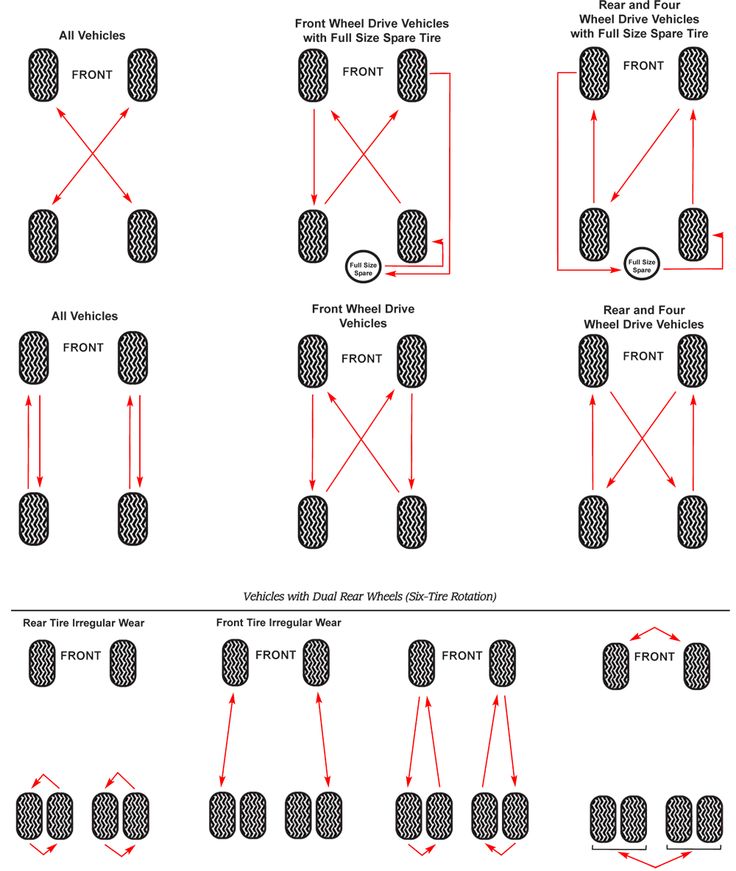
Tires should be rotated according to the tire manufacturer’s recommended tire rotation schedule. Their rotation schedule is the best and most effective because they are most aware of how quickly the rubber will wear down and how frequently the tires should be rotated to get the most tread life possible from them.
Any time you notice tire noise or vibrations you should have your local tire installer check your vehicle and tires for issues that would cause these problems. Tire rotation or balancing may solve these problems, but there may be other problems they can identify that need to be fixed.
Rotating your tires according to the tire manufacturer’s recommended schedule will also ensure that your tires can be warranted if they don’t last as long as the manufacturer’s warranty guarantees that they will last.
You must provide proof that the tires have been rotated according to the required schedule to meet the warranty qualifications. This means providing dated receipts for each tire rotation.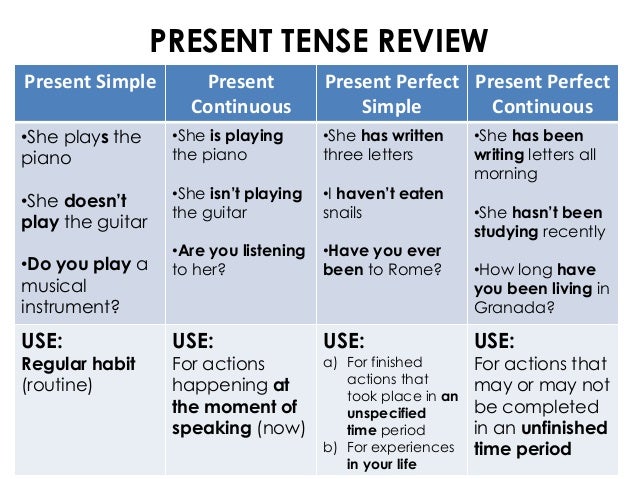 This is the primary reason you shouldn’t rotate your tires yourself.
This is the primary reason you shouldn’t rotate your tires yourself.
Generally speaking, tires should be rotated every 5,000 miles. To ensure that the tire manufacturer’s warranty is not voided, you should rotate your tires as often as they recommend.
Some tires with softer rubber compounds will benefit from more frequent tire rotation, while others with harder rubber compounds can be rotated less frequently.
You may also want to rotate your tires more frequently if your car or truck suspension geometry causes the contact patch to be unusually off-center on the tread of the tire.
For instance, it’s common for sports cars to have negative camber on the rear tires. This means the top of the tires are tilted slightly inward when looking at the vehicle from the rear. Negative camber causes premature wear on the inner shoulder of the tire tread.
Tire rotation is not necessary, however, it can have some serious drawbacks if not performed regularly.
The tire manufacturer’s warranty requires proof of tire rotations being performed according to the required schedule to make a warranty claim if the tires don’t last the duration of the manufacturer’s warranty guarantee.
Tire balancing is the process of placing wheel weights at strategic points around the rim of the wheels to reduce vibrations at high speed.
Small inconsistencies in the weight of the tire and wheel as it spins around will cause slight vibrations. These vibrations can become magnified the faster you go.
The purpose of tire balancing is to eliminate tire vibrations by ensuring the tire and wheel assembly is the same weight all the way around the assembly.
Very small inconsistencies in the weight difference around the tire and rim can cause severe vibrations if not corrected with small weights.
All tires should be balanced when originally mounted. Tires should be rebalanced every 5,000 – 10,000 miles or so.
If you feel tire vibrations coming through the chassis of your car or through the steering wheel, especially as you drive faster, you should consider having your tires balanced again. This is also true if you begin to hear tire noise that wasn’t present before.
Also, if you notice unusual tread wear you should ask your local tire installer to rebalance your tires and inspect for other problems that could cause unusual tread wear.
It’s common to have tires rebalanced when tires are rotated out of convenience and due to the recommended interval to have tires rebalanced being similar to the amount of time recommended for rotating tires.
Tires can become slightly out of balance as the rubber tread wears down over time.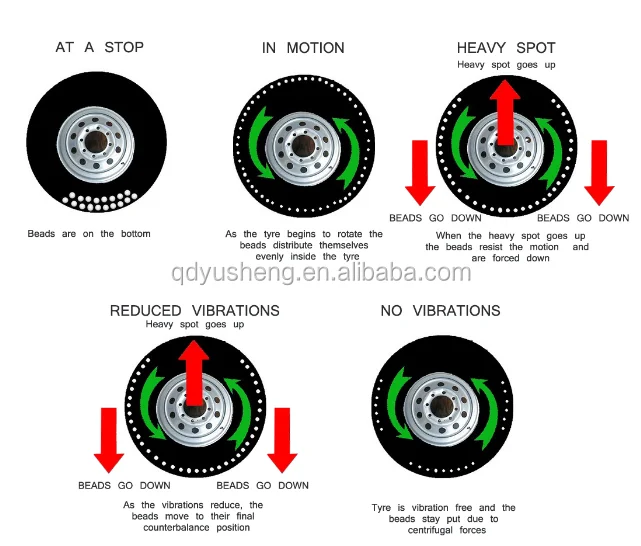 Small inconsistencies can begin to show up and cause vibrations that can be felt through the car chases or steering wheel.
Small inconsistencies can begin to show up and cause vibrations that can be felt through the car chases or steering wheel.
Adhesive Wheel Weights
Many people find it convenient to have tires balanced when rotated. This isn’t necessary but they should likely be rebalanced every other tire rotation cycle.
Regularly rebalancing your tires is convenient to do at the same time as other services where the wheels are removed from the car or truck.
Uneven wear will go uncorrected until the tires fail prematurely. Often, uneven wear can be compensated dramatically by regular tire rotation.
Tire balancing is necessary when tires are originally mounted to your vehicle rims or there will be significant vibration, especially at high speeds.
Tire balancing after the initial balance is performed usually isn’t necessary but recommended to ensure there isn’t poor tire wear, noise, or vibrations.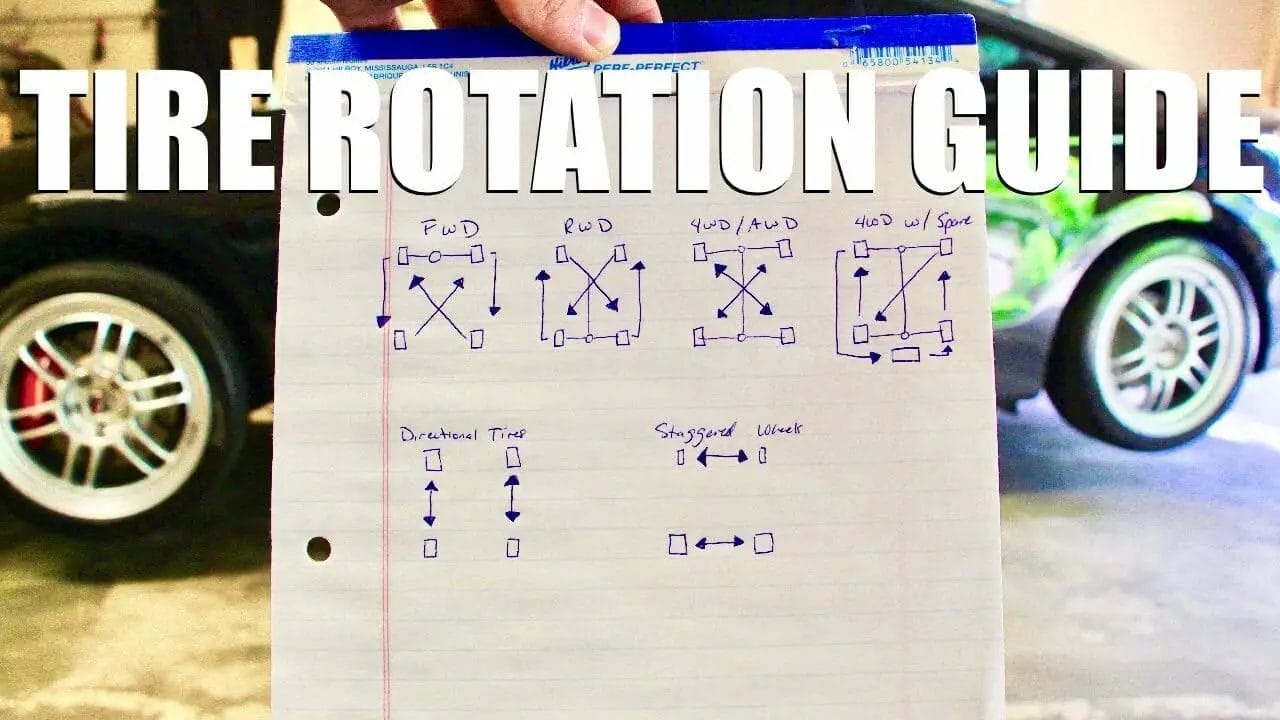
To maximize ride comfort and tire life, tire balancing should be performed regularly.
Tire rotation and balancing don’t need to be done at the same time. It is often convenient to do them together to save a trip to your tire installer.
Be sure to know what the manufacturer’s recommended tire rotation schedule is so that you ensure your tire warranty is kept in good standing in case you need to make a warranty claim.
Also pay attention to tire noise, vibrations, and unusual tire wear so that you can make a visit to your tire installer to help you correct any of these problems before they become more severe.
Below are some links you may find helpful when learning about tires
Will Creech
Will has been an automotive enthusiast since he was old enough to make engine sounds. Formerly a member of the contract training team at Discount Tire, he is unusually knowledgeable on all things related to tires.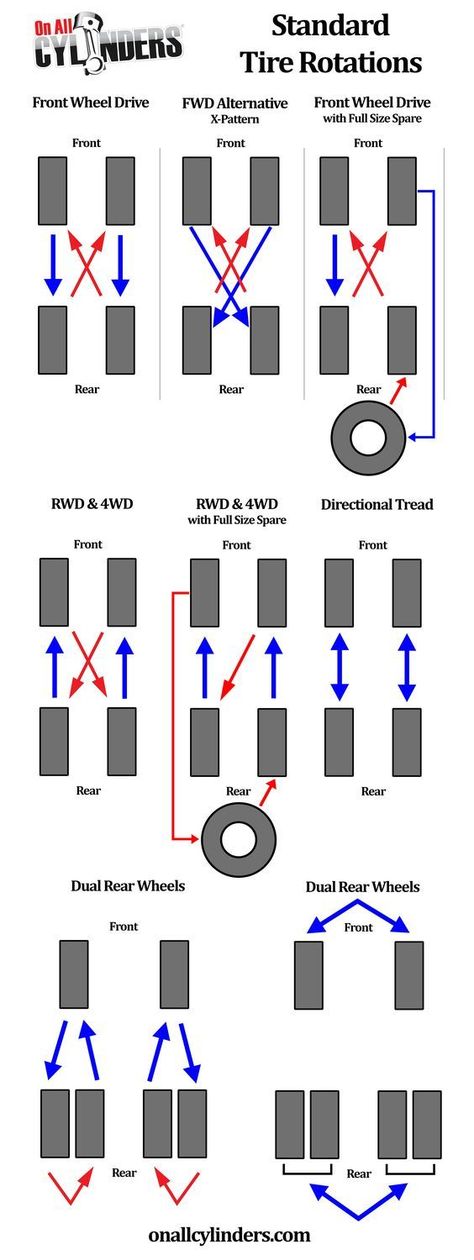 He is now the owner of and main contributor to TireGrades.com.
He is now the owner of and main contributor to TireGrades.com.
Lack of wheel balance is not only a deferred suspension expense and premature tire wear, but also a potential threat to safe driving. Wheel wobble leads to uneven "eating" of the tire, vibrations on the steering wheel, which are more felt with increasing speed.
However, once done balancing is not something eternal. Poor road surface, long-term storage, errors in operation lead to wheel imbalance. Winter and summer tires on two sets of discs do not save here.
Regardless of the operating options, the answer here is unambiguous: yes, balancing is needed.
Consider the option with two sets of rubber on the disks.
After leaving the winter, the driver sends the winter set for storage in the garage or on the balcony. The wheels will only return to the car closer to the next first snow. During the operation, the wheel with a high degree of probability flew into the pit more than once, it is possible that the tire was not inflated in time, it was operated in modes not intended for it.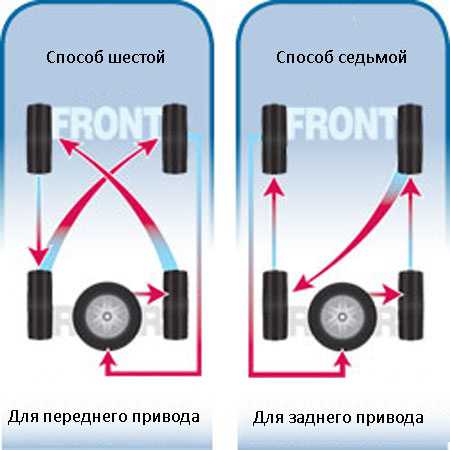 All this can lead to loss of weights, a slight change in tire weight, but enough to upset the balance of the wheel.
All this can lead to loss of weights, a slight change in tire weight, but enough to upset the balance of the wheel.
Tire manufacturers recommend balancing every 10-15 thousand km. Each driver has his own driving mode, so these recommendations are quite difficult to follow. It is better to check and balance before the start of the season.
At the expense of winter studded tires, there is a special opinion that the mileage until the next check is 5 thousand km. The reason is the flying spikes and increased loads on the wheel, which are formed due to adhering ice.
It is also recommended to balance after a puncture or cut has been repaired, after a serious blow.
The quality of work is influenced, first of all, by the equipment. Both the level of the stand and its wear are important here.
The best results are given by computer-controlled stands.
Such equipment makes it possible to balance discs using a system of spaced weights, even for wheels with a large imbalance.
Stands can be calibrated to different accuracy: 1, 5, 10 grams. Most often, 5-gram precision is used. This is quite enough to achieve good results for a wide range of car tires.
10 grams do not give such accuracy, but for lack of a better one, it is quite sufficient. Calibration of the machine by 1 gram is necessary for vehicles operated at high speeds.
However, no matter how modern the equipment is, over time, wear and tear of the elements occurs. Most often, wheel mounts are produced, which introduces errors into balancing. Stand bearings become unusable less often. If the bearing is damaged, there are beats in it. This situation leads to inadequate sensor readings and imbalance.
6000 rub
8500 rub
9000 rub
An important point in the operation of the car is wheel balancing.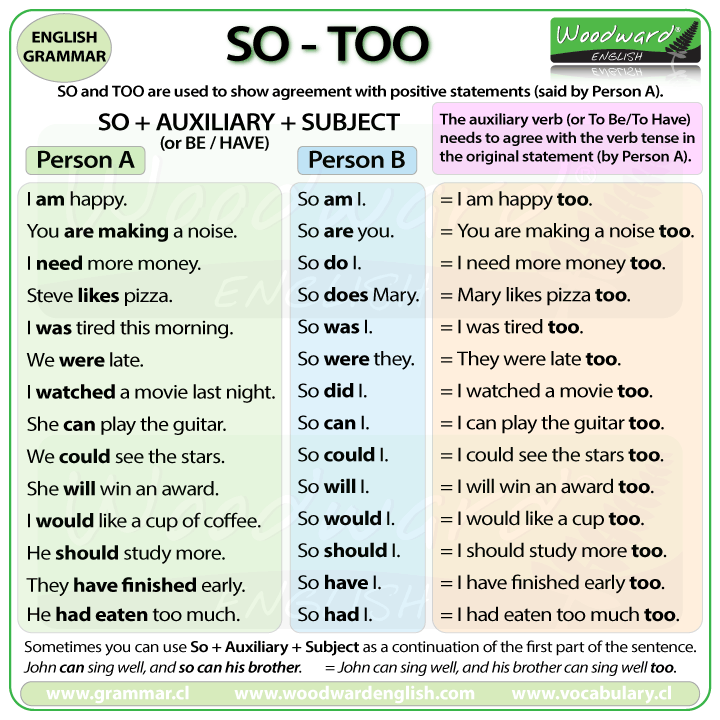 Thanks to this operation, it is possible to eliminate the imbalance that occurs for a number of reasons. Novice motorists are mistaken in believing that it is enough to balance the wheels once during a tire change. Unfortunately, it is required to visit a tire fitting much more often, because the loads on the wheels during the operation of the machine can lead to their imbalance over time.
Thanks to this operation, it is possible to eliminate the imbalance that occurs for a number of reasons. Novice motorists are mistaken in believing that it is enough to balance the wheels once during a tire change. Unfortunately, it is required to visit a tire fitting much more often, because the loads on the wheels during the operation of the machine can lead to their imbalance over time.
Article content :
Despite the constant improvement in the quality of car tires, it has not yet been possible to achieve the perfect balance of rubber during manufacture. Yes, and the disks contribute to the imbalance of the entire wheel structure.
Specialists distinguish between static and dynamic types of wheel imbalance. They are successfully eliminated by hanging special balancing weights on the disk. Some car owners require that the weight be glued to the inner surface of the rim so as not to spoil the visual appeal of the wheels. However, in some cases, to eliminate the imbalance, one has to make sacrifices and stuff weights on the edge of the disk.
Some car owners require that the weight be glued to the inner surface of the rim so as not to spoil the visual appeal of the wheels. However, in some cases, to eliminate the imbalance, one has to make sacrifices and stuff weights on the edge of the disk.
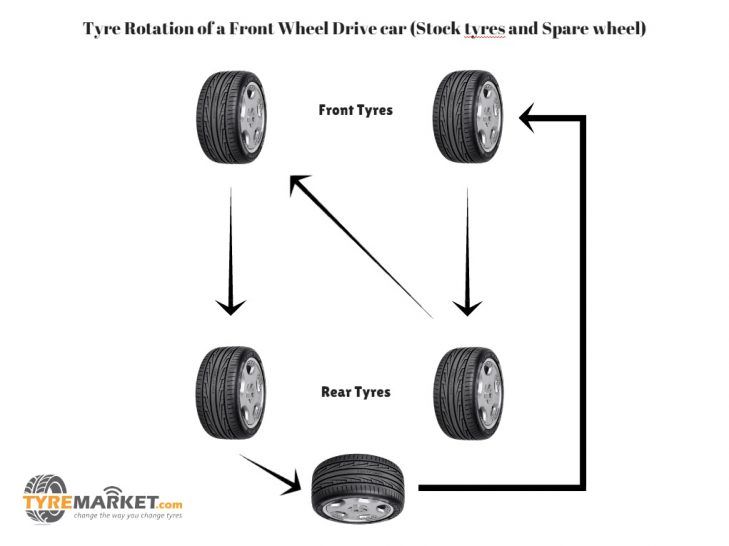 Typically, this type of imbalance is observed in wide-profile wheels.
Typically, this type of imbalance is observed in wide-profile wheels. There are a few important things a tire fitter should consider when balancing. This will reduce the risk that the motorist will have to visit the car service unscheduled due to compensating weights lost during the operation of the car. The sequence of balancing work should be as follows:
Beginning car enthusiasts should be aware that putting decorative caps and other accessories on a balanced wheel can cause imbalance.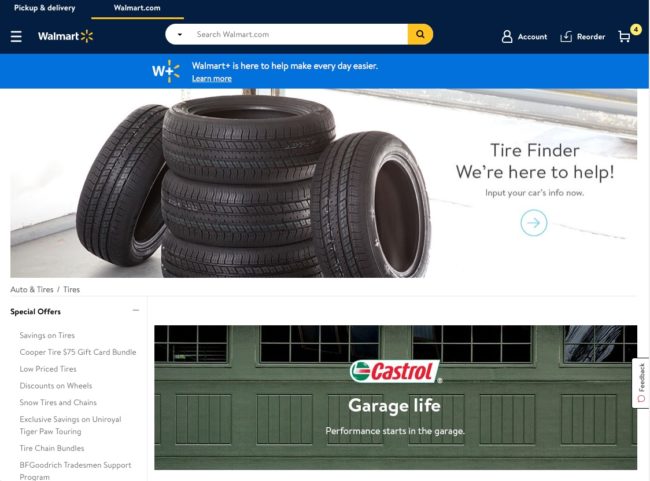
The number of visits to a tire shop for wheel balancing directly depends on the frequency and accuracy of using the car in everyday life. The starting point is considered to be a mark of 10-15 thousand km. mileage if the car is moving on good roads. Most automakers recommend sticking to these numbers. However, ideal road surfaces are not yet found everywhere. Here are some useful tips on the topic to listen to:
